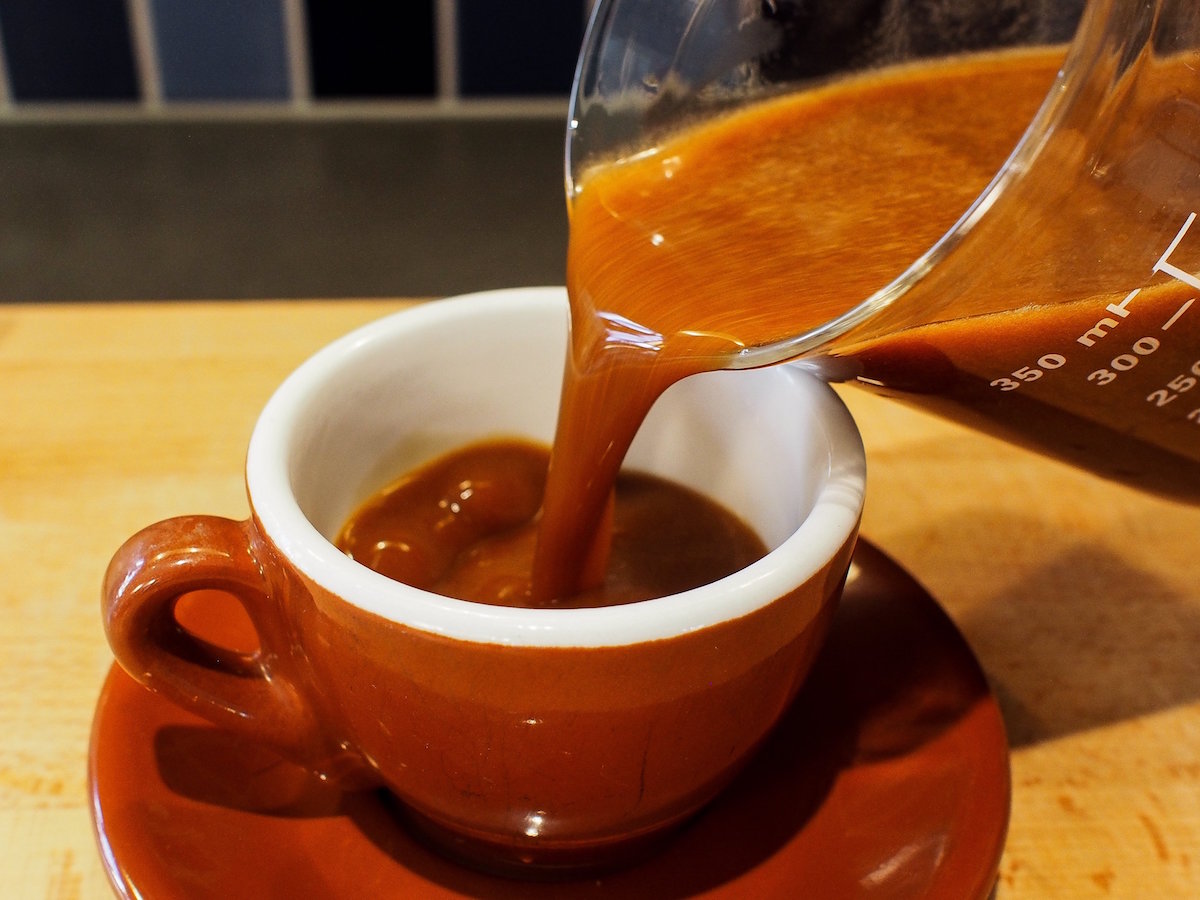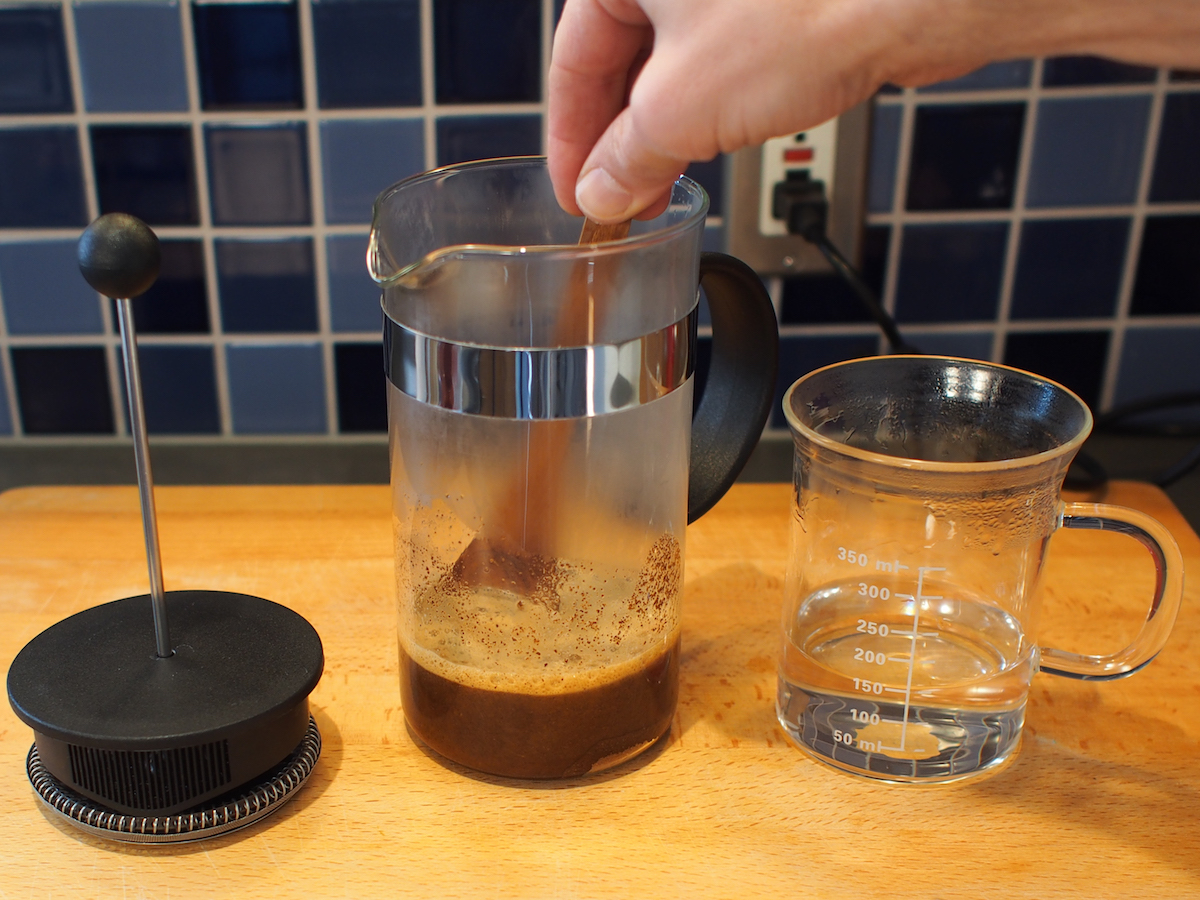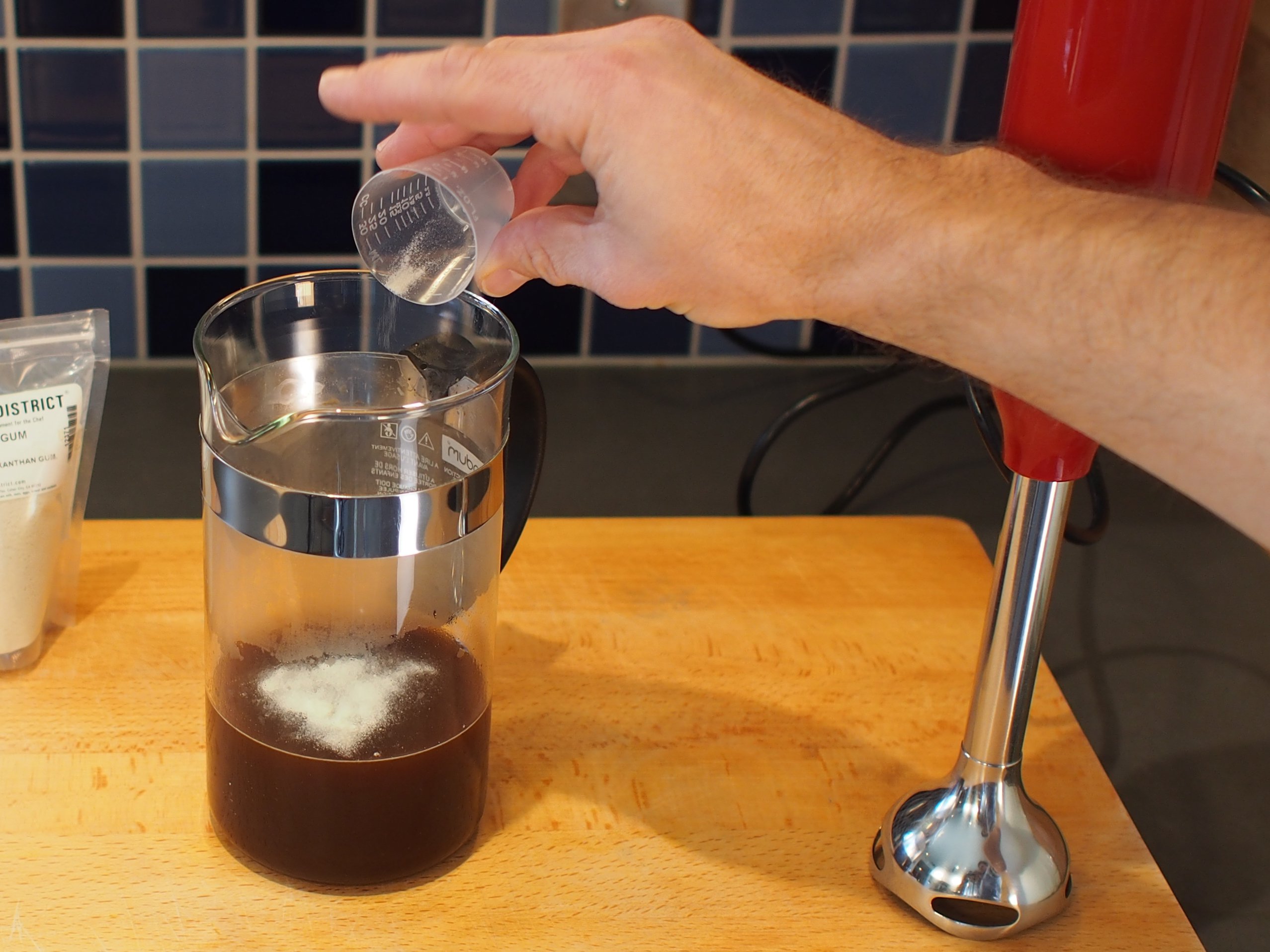
Coffee. Coffee is wonderful. That aroma. That taste. That touch.
That touch? Yes, that touch. The “mouthfeel” of a cup of coffee can be an important element in our enjoyment of this miracle beverage. But typically we only experience thick, velvety mouthfeel in milk drinks such as cappuccino and caffé latte. When expertly steamed — stretched and textured in barista-speak — the proteins and fat in the milk help it trap tiny air bubbles (ideally less than 30 microns in size), which lend that luxurious mouthfeel to the milk-based coffee drinks. (As a side note, poorly steamed milk, or milk aerated with a frothing wand, tends to be comprised of larger bubbles, hence the lack of creamy mouthfeel.)
Cappuccino and its brethren are delightful to consume, but what if you’d like to add that beautiful creamy mouthfeel to your coffee without the frothed milk? Science comes to the rescue in the form of a polysaccharide secreted by Xanthomonas campestris bacteria during sugar fermentation, better known as xanthan gum.
Xanthan gum has long been used as a thickening agent, homogenizer, and emulsifier in commercially produced foods such as salad dressings, sauces, and ice cream. It has become readily available in supermarkets thanks to its use as a gluten substitute in gluten-free baking. A tiny amount — as low as 0.1% by weight — is adequate to increase the viscosity of most liquids. When whipped, a xanthan gum-thickened liquid will trap and suspend many, many tiny air bubbles.
This method of creating “not a latte” was popularized by chef Grant Crilly of the ChefSteps.com website. The principle is that you’ll start with coffee made through a typical home brewing method, such as French press, drip, pour-over, cold brew, or Chemex. Next you’ll add a tiny pinch of xanthan gum. One-quarter of a teaspoon is enough for 12 ounces of brewed coffee. (Be careful about just eyeballing it; you can make some pretty slimy, ultra-thick coffee if you overdo it.) Finally, you’ll froth the heck out of the mixture in a blender or with an immersion blender. The result is a thickened, microbubble-filled coffee with a beautiful mouthfeel.
There are other thickeners and emulsifiers that would be interesting to try as well. Coming from the classic cocktail bag of tricks, egg whites add mouthfeel to drinks such as the Pisco Sour and the Ramos Gin Fizz. (Dried egg white powder or pasteurized egg whites are available if you have concerns about salmonella.)
The pre-Prohibition era cocktail sweetener of choice added thicker mouthfeel to drinks than does today’s simple syrup. Gomme syrup, also called “gum syrup,” was made from sugar, water, and the hydrocolloid made from acacia tree sap known as gum arabic. This additive could potentially do something interesting to coffee…
We can also look at the worlds of industrial food manufacture and modernist cuisine for other thickening agents. VersaWhip, MehylCel F50, Agar Agar, and others are all out there waiting to be employed in the quest for velvety, delicious coffee.
Let us know about your experiments in the comments below!
Modernist Coffee
serves two
Equipment
Coffee brewer
Measuring cups/spoons or gram scale
Blender or immersion blender and pitcher
Ingredients
12 fluid ounces | 350 ml | 330 g by weight water
1/2 C | 33 g by weight freshly ground coffee
1/4 tsp. | 0.4 g by weight xanthan gum











